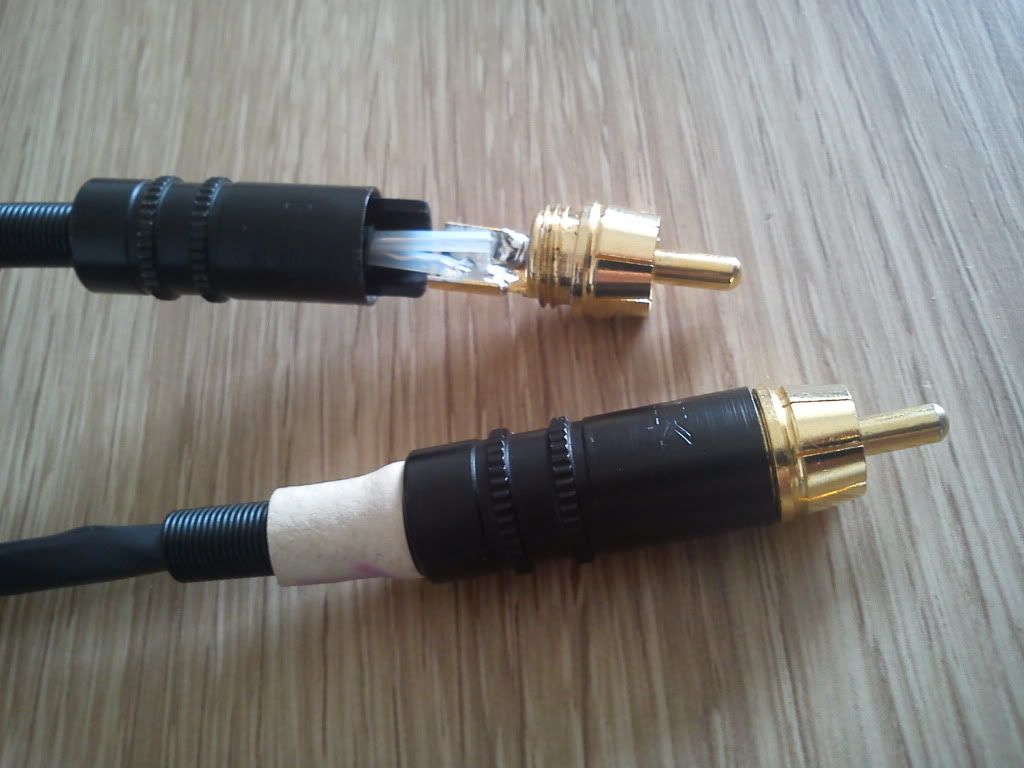PAC interconnect
Hi Paul
I just bought these from a Nick on T'Wam:

I don't know much about them, save that they were cheap enough to be an impulse buy and that I think he said they were silver? What can you tell me about them? Do they equate (or nearly) with anything you make now?
I haven't used them yet as I loaned out my office system to someone who fell on hard times, and as far as the big rig goes - well they are too short to go betwixt the pre & amp. Maybe when I get my new amps they might be viable.
I may try them from the DAC to Pre though, but without matching cables downstream I'm not sure of the point, whether any difference these make will be audible.
I just bought these from a Nick on T'Wam:

I don't know much about them, save that they were cheap enough to be an impulse buy and that I think he said they were silver? What can you tell me about them? Do they equate (or nearly) with anything you make now?
I haven't used them yet as I loaned out my office system to someone who fell on hard times, and as far as the big rig goes - well they are too short to go betwixt the pre & amp. Maybe when I get my new amps they might be viable.
I may try them from the DAC to Pre though, but without matching cables downstream I'm not sure of the point, whether any difference these make will be audible.

Comments
And, to take your argument to the (il)logical conclusion, you'd only get discernible changes from swapping speakers ;-)
Actually, your point makes a lot sense (I hadn't thought of it quite like that) - maybe my OCD preference for symmetry and matching things is taking over! @-)
I will of course try them, when I get a moment of five of peace in this madhouse! ~X(
B-)
:-S
Well, along with messing with my pre last week I also put these I/Cs in the system, between the pre & power amp. It replaced an NVA SSP, a similar cable. Both are unshielded silver interconncts, but the SSP is much thicker and stiffer. This cable has considerably better RCA plugs though, they made a really satisfying connection.
It sounds very similar to the SSP actually, except it lacks the deepest bass the SSP gave. I would guess this is down to the thickness of the wires, but apart from that it was very similar. I didn't mind losing a little of that deep bass as I was having a few bass issues anyway, and this definitely helped. There's not a lot in it, it simply sounds like the bassist has either been turned down or is standing further away.
These cables do steal a march on the SSPs in one area though, they are beautifully detailed in the upper bass and midrange. The leading edge of every sound is brightly lit and well defined, and low level detail like texture is more apparent. This may be because the extra bass the SSPs permit swamps this more delicate detail, I can't be sure, bit I do like having it right now.
I already miss the deeper bass though, so I am plotting ways to 'eat this cake'. I wonder - and it's a long shot - if the better Neutrik plugs on this cable are contributing to some of the good points I am enjoying. I have never really had differences in RCA plugs demonstrated to me but I have been taught a lot about audio in the last six months - enough to push my scepticism aside. So, I have ordered some Neutrik profi gold RCA plugs, which always used to be well thought of. They are a step above what is on this cable, so I plan to re-terminate my SSP with these and see if I can retain this lovely delicate detail and have the low bass energy.
:-\"
Thanks for setting me straight about plugs and cable thickness. The differences may not be down to the basic cable then?
I hope to see some of the plug differences demonstrated when I reterminate my SSP, assuming I can do a half-decent job. BTW, I have had my eye on your Plutos for a while now.